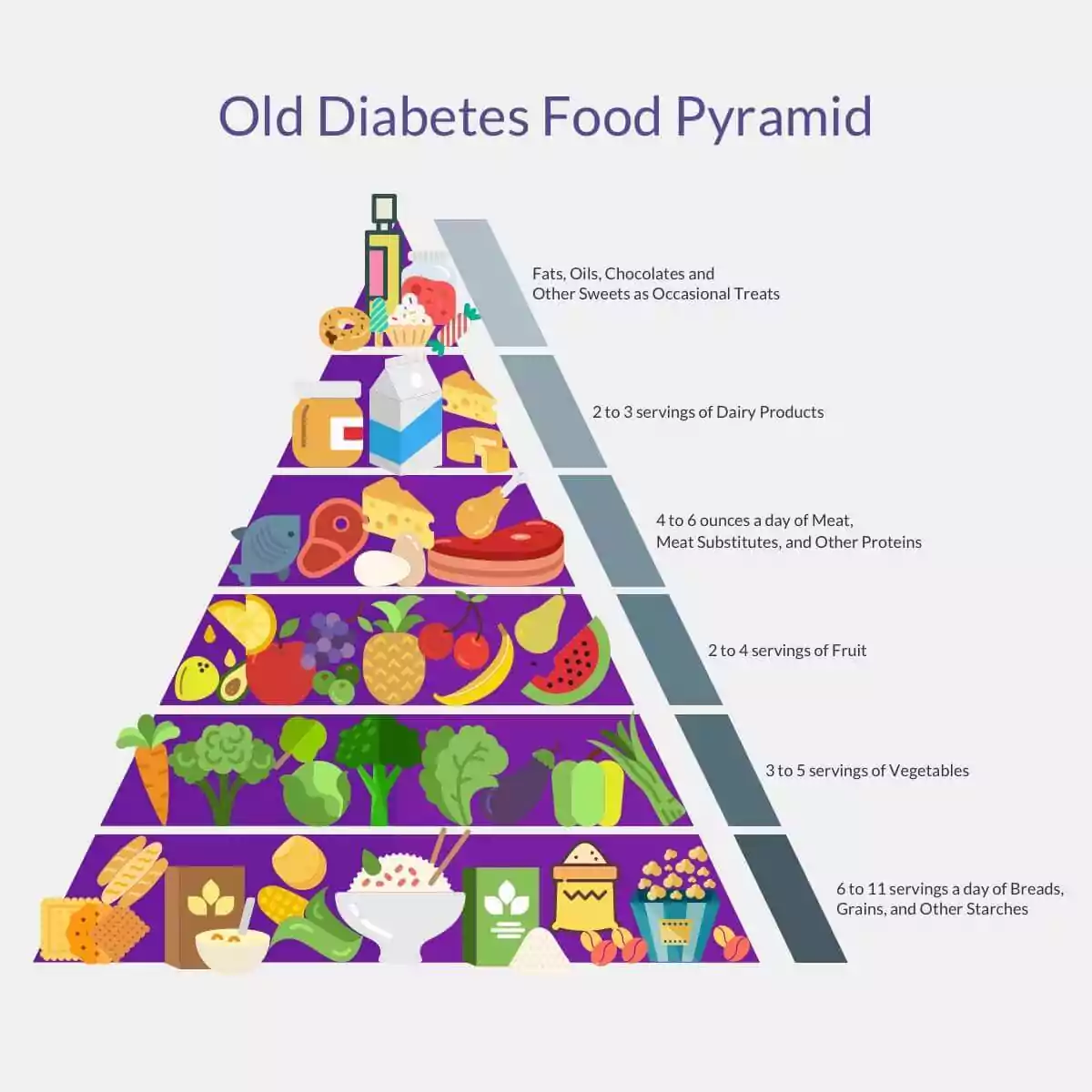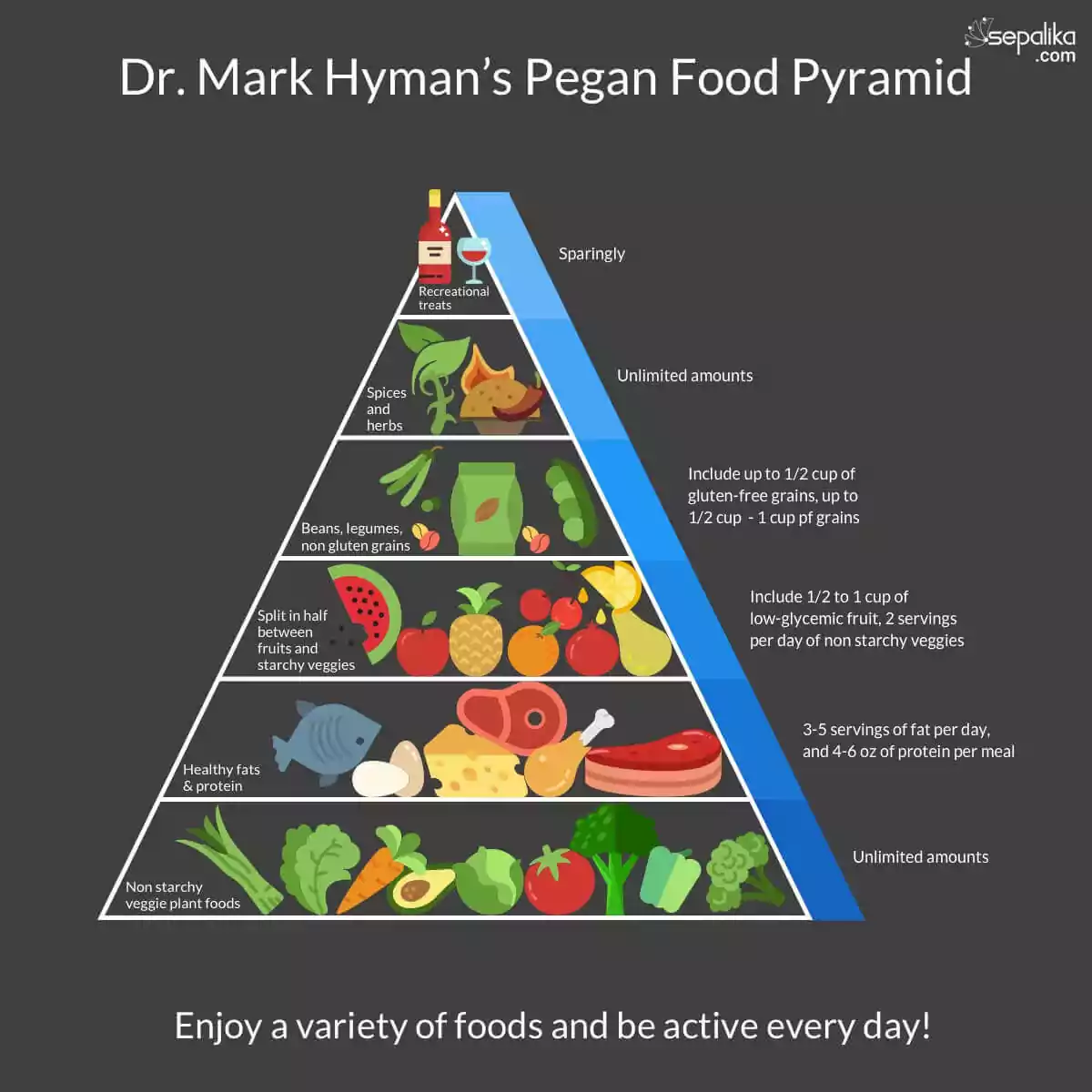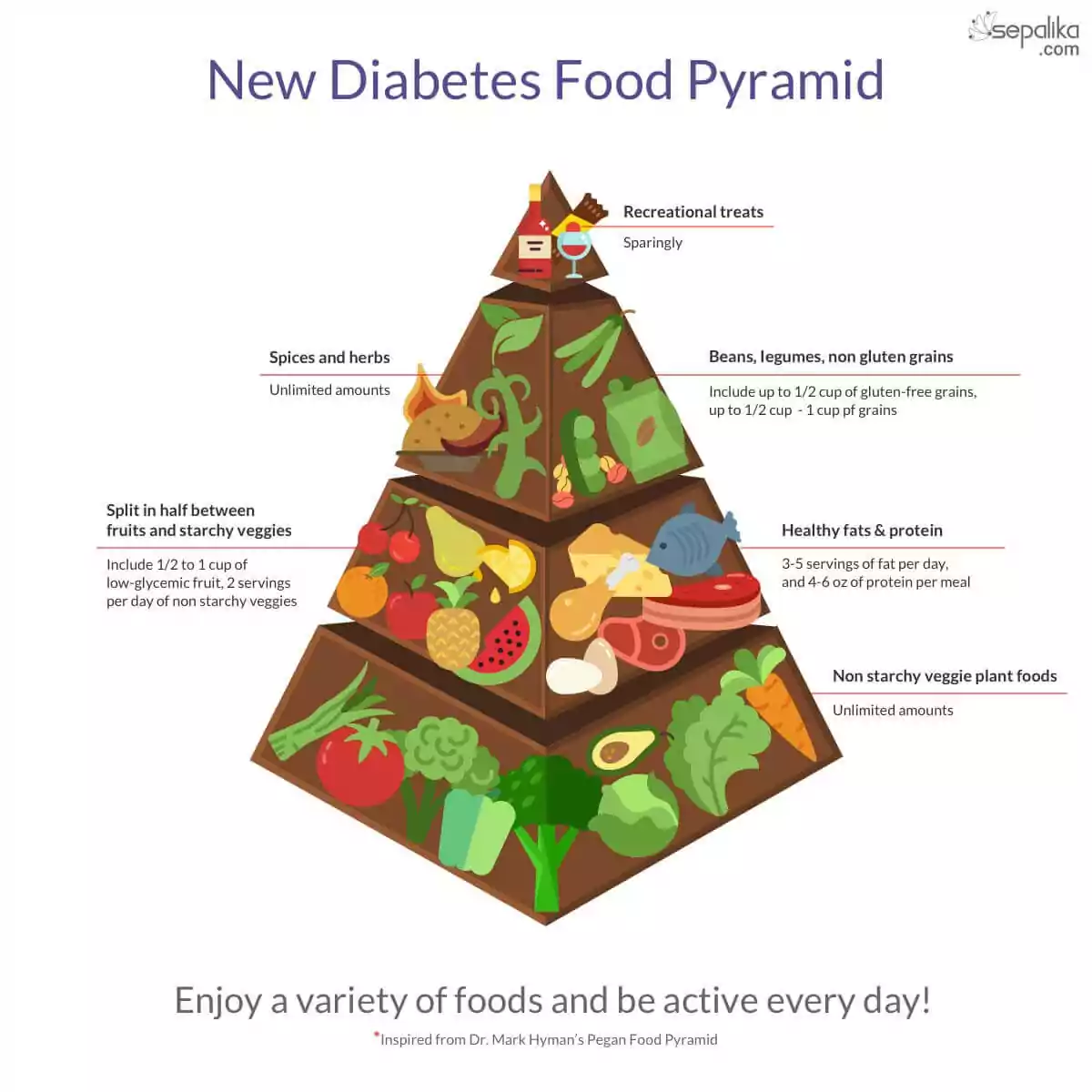
Diet Guide & Principles
Diabetes Food Pyramid: Build Your Health Back Up!
Mar 21, 2017M.Ds say that a healthy diet is crucial for reversing diabetes. However, many of us with diabetes need help in learning how to eat right. That’s why we need the Diabetes Food Pyramid.
It’s quite simple. The Diabetes Food Pyramid, ideally, tells you how much of what foods you should eat every day. It was designed by the American Diabetes Association and the American Dietetic Association. It divides food into 6 groups. Foods at the bottom, which is a wider section, should be eaten in larger portions, while food groups at the narrow top should be consumed less.
Most doctors will hand you this food pyramid chart from the ADA as a part of your advice. But, what if we told you that more and more M.Ds are now disagreeing with this pyramid and are suggesting you use a different one? What if those very doctors were the ones reversing type 2 diabetes in their clinics?
Important Note: In 2011, the U.S. Department of Agriculture swapped the Food Pyramid for the American Plate. The ADA followed suit. However, its approach to two crucial components – fats and carbs – has, roughly, remained the same. So, in order to compare the old diabetic food pyramid and the new diabetic food pyramid (followed by functional M.D.s like Dr. Mark Hyman), we are still using pyramids as the visual aid to point out key differences.
The Traditional Diabetic Food Pyramid: Does It Make Sense Anymore?
The traditional diabetes food pyramid looks something like this, from bottom to top:
- 6 to 11 servings a day of Breads, Grains and Other Starches
- 3 to 5 servings of Vegetables
- 2 to 4 servings of Fruit
- 2 to 3 servings of Dairy Products
- 4 to 6 ounces a day of Meat, Meat Substitutes and Other Proteins
- Fats, Oils, Chocolates and Other Sweets as Occasional Treats
To figure out what’s wrong with this pyramid, just take a look at the bottom of it. The carbs are sitting there! That’s a whole lot for diabetics to eat every day.
We’ve built resources for you on reversing diabetes, diabetes and weight loss and the simplest diabetes diet plan. We are big fans of Canadian nephrologist Dr. Jason Fung and his amazing work, when it comes to weight loss and diabetes. Dr. Fung and other M.Ds like him are successfully reversing Type 2 Diabetes in their patients. For them, the Low Carbohydrate High Fat Diet (LCHF diet) is often the critical starting point.
The combination of low carbohydrates and good fats is being shown to improve weight loss and insulin resistance in a variety of studies. A UK-based study done in 2006 found that “carbohydrate restriction was an effective method of achieving short-term weight loss compared with standard advice, but this was at the expense of an increase in relative saturated fat intake.” The study examined 102 Type 2 diabetes patients over a 3-month program. One group was given low carb and high fat foods while the other was given reduced carb portions and low fat food. All participants were obese, with poorly controlled Type 2 diabetes. The people on the LCHF diet lost weight by the end of the study and showed improved cholesterol numbers (higher HDL) as well.
Another Canadian study found strong evidence supporting the intake of vegetables, nuts, a high-quality, Mediterranean diet plan for greater protection from Coronary Heart Disease. It also found that harmful factors like the intake of trans fats and foods with a high glycemic index or load increase the risk of heart disease. We’re highlighting this study because the traditional Diabetes Food Pyramid restricts fats by putting it at the very top of the pyramid, treating it as the villain. But in 2016, the U.S government took good fats and cholesterol off the ‘naughty’ list. High quality fats are heart healthy and must be included in bigger portions into the diabetes food pyramid.
An LCHF diet with limited portions of red meat, cheese, eggs and no added sugars closely resembles the popular Mediterranean diet. Several studies have proven than the Mediterranean diet is not only ideal for weight loss; it is also great for diabetes.
Ideally, A Diabetic Food Pyramid Should Look Like This
When you break it down (pun intended), it’s pretty clear why low-carb diets work to reverse T2D. Carbohydrates break down into sugars in the body. These sugars go into the blood stream and cause a spike in blood glucose levels. Reduce the carbs and your blood sugar levels will begin to stabilize. We really like Dr. Mark Hyman’s Pegan Food Pyramid for this very reason.
The LCHF diabetes food pyramid focuses on:
- Non-starchy vegetables and plant food as the base, which you can have unlimited amounts of (until you feel satisfied).
- Next, 3 to 5 servings of healthy fats per day and 4 to 6 ounces of proteins per meal. It’s a good idea to mix proteins. Think eggs for breakfast, roasted chicken or turkey for lunch and salmon for dinner. Tofu and beans are good protein sources for vegans.
- Higher up in the pyramid, ½ to 1 cup of low-glycemic fruits like pears, cherries, plums, strawberries, apples and oranges. In addition to that, 2 servings of non-starchy vegetables like asparagus, artichokes, lettuce, broccoli, cucumber, celery, zucchini and squash are enough per day.
- Limit grains and legumes to only half a cup of whole grains and a maximum of 1 cup of beans.
- Spices and Herbs can be used in unlimited quantities to season your food and add interesting flavors to your LCHF diet
- Consume desserts, alcohol and other treats only occasionally
Lots of patients with T2D have followed this diabetic food pyramid chart in combination with intermittent fasting, to make huge gains in blood sugar control. Add a bit of sustainable exercise and you are well on the path to reversing your T2D. It could be as simple as walking. Research shows that yoga and other techniques of stress management, also, go a long way to tip the scales in your favor and against diabetes.
New Diabetic Food Pyramid: Quick Tips
- If you are going to follow the Food Pyramid for Diabetes, keep a close eye on your servings per day. Thankfully, eating healthy fats makes this task a lot easier. Since, adding more fat to every meal helps you feel fuller with smaller portion sizes, you won’t be starving yourself.
- Be careful not to eat too much fruit. Fruit is nature’s candy; it’s full of sugars. Ideally, we want to put as little sugar as possible into our bodies. If you favor some fruits over others, check with your dietitian to see how much he’d recommend per day.
- Non-starchy vegetables are a good choice. These include spinach, carrots, broccoli and green beans.
- Low carb doesn’t mean no-carb, so don’t confuse the two. Eat whole-grain foods such as brown rice and quinoa in permitted portions.
- Include legumes like lentils, kidney or pinto beans in your meal plans.
- For healthy proteins, choose fish over meat two to three times a week. For meat, you can pick chicken or turkey, which are lean meats. But, you can even have them with the skin on, since they are rich in natural fats. Red meat can be an occasional treat.
- Don’t forget to mix up your proteins, as each type provides a unique mix of nutrients. Keep in mind that dairy products like milk, yoghurt and cheese are alternatives for protein that, also, provide calcium (crucial for healthy bones, muscles and nerves) and other vitamins and minerals.
While this diabetic food pyramid chart gives you a good starting point on modifying your eating habits, we ‘ve put together diet plans and fantastic recipes for right here. Based on your current level of activity, you can choose Sedentary Lifestyle, Active Lifestyle or Highly Active Lifestyle and get complete plans for breakfast, lunch and dinner for the whole week.
So, go ahead and eat your way out of type 2 diabetes!
References:
- Short-term effects of severe dietary carbohydrate-restriction advice in Type 2 diabetes—a randomized controlled trial – http://onlinelibrary.wiley.com/doi/10.1111/j.1464-5491.2005.01760.x/abstract
- A Systematic Review of the Evidence Supporting a Causal Link Between Dietary Factors and Coronary Heart Disease – http://jamanetwork.com/journals/jamainternalmedicine/fullarticle/1108492
- Prevention of diabetes with Mediterranean diets: a subgroup analysis of a randomized trial – https://www.ncbi.nlm.nih.gov/pubmed/24573661/







